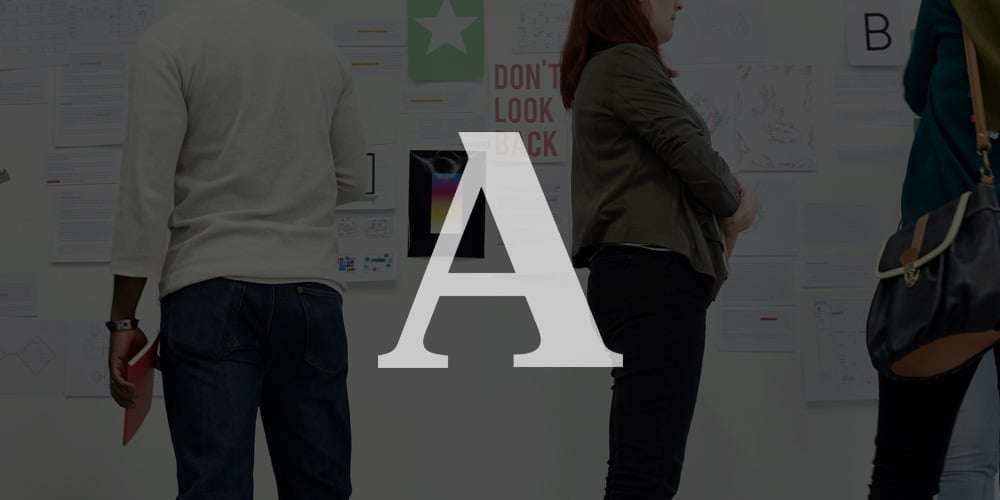Therefore, we have collected various academic articles and research on graphic design on this page. Our goal is to help visual designers working in the advertising industry understand the function of graphic design by providing access to academic information on the basic elements of design. This, in turn, will enrich the perspectives of art directors in the marketing industry.
Academic Research and Articles on Graphic Design
We hope that academic articles and research on design components such as color and typography, as well as the historical process and basic principles of design, will enrich the production of graphic design professionals. Students studying graphic design will learn the historical understanding of graphic design so that they will be able to recognize current problems in the visual field. We hope that scientific research and articles written by experts in this visual discipline will improve our approach to problem solving in design.
Rethinking Graphic Design: Sustainability, Slowness, and Regional Identity
This is a collection of academic essays that explore the ever-changing landscape of graphic design. This comprehensive list of essays covers various concepts such as sustainability, the importance of slow design processes, and the importance of regional identity. The essays are thought-provoking and offer insightful ideas on how graphic design can not only serve its traditional purposes, but also contribute to environmental awareness, encourage deeper reflection, and celebrate local cultures.
Sustainable. Graphic Design? Maryland Institute College of Art
This book is a collection of thoughts on what sustainability means in the context of a graphic design student’s practice. Thanks to all the students in GD314 for their honest and authentic attempts to document their thoughts on the term, on sustainability, and on the future of their respective design directions.
Slowing Down Graphic Design By Kristian Bjornard
Our modern lives are fast, and so design must be fast to help information and understanding keep up with the pace of life. “So what,” Trace asked the class, “does slow graphic design look and behave like?” Trace’s question caused everyone in the room to stop and think. What is fast design? What is slow design?
It’s a Talk About Graphic Design By David Cabianca
Try Again, Fail Again, Fail Better, or, Thoughts on an Ongoing Dissatisfaction with the Limits of Language – and Yes, It’s a Talk About Graphic Design: The 2D Design Program has always piqued my interest, ever since I discovered Rick Poynor’s first Typography Now book and read the names of the schools associated with the coolest work.
Regionalism in Graphic Design By Darrin Hunter
Regionalism emerged in the 1980s as a design theory to address a growing discomfort with the perceived placelessness and lack of identity in modernist and postmodernist architecture. The original ideals of the modernist movement were to create environments that improved the quality of life for everyone, using universal design principles that could supposedly be applied anywhere with equal success.
The Rescuing of Locally Specific Brand Imagery By Pedro Carvalho Almeida
By showing what can be lost in terms of historical and cultural memory in a brand’s imagery, this thesis questions the importance of archives for locally specific brands that claim symbolic and cultural relevance. It shows how graphic designers can contribute to the preservation of cultural diversity through visual identity.
Meta Identity, Graphic Design Master Thesis By Marcello J. Biffi
The prerogative of identity design has always been to manage the visual representation of an object, an individual, an organization. Traditionally, a visual identity revolves around a primary signifier that represents a specific entity. Its goal is to fulfill the four basic functions of visual communication – to identify, to inform, to present, and to promote – and to confirm the audience’s perception.
The Expanding Canvas of Graphic Design: Ethics, Education, and Historical Context
This collection of essays explores the ever-expanding canvas of graphic design. It addresses critical issues facing the profession today, such as ethical considerations for designers and the evolving role of design education. It also examines the historical significance of specific graphic design programs and movements. Readers will gain a comprehensive understanding of how graphic design is addressing its impact on society, the environment, and the education of future designers, while appreciating its rich historical context.
A Question of Ethics By Lama Ajeenah
Graphic design is in a state of ethical crisis as designers operate within the confines of the law but with a clear lack of ethics. Being in a field that communicates with people from different ethnic and cultural backgrounds, it is critical for designers to set the rules of ethics; the question that arises is: who sets the rules of ethical graphic design?
Graphic Design Speculations By Synne Skjulstad
In this paper we discuss how the teaching of visual identity in graphic design education can be redeveloped within a speculative design framework. We explore how the teaching of visual identity design has been speculatively framed with reference to a student project focusing on future scenarios for water sustainability.
Graphic Design Education as a Liberal Art By Gunnar Swanson
Although this essay focuses on issues of graphic design education, my arguments are also relevant to education in other areas of design; most apply to art education, and many are relevant to post-secondary education in general. Finally, just as the essay calls for a broad view of design education and a broad context for design, I hope it will be read in a broad context and the arguments applied wherever appropriate.
Teaching Toward a Legacy in Graphic Design By Scott Boylston
Everything graphic designers make is trash. This was suggested by design critic Kerrie Jacobs in 1990, referring to the inherent and often instantaneous disposability of much of what graphic designers produce. At the time, the Environmental Protection Agency estimated that paper and paperboard-the primary substrates of the graphic design industry-made up 41% of the solid waste stream.
Fifty Years of the Yale Graphic Design Thesis By Randall Hoyt
As the first program of its kind in the United States, the Yale Graphic Arts Program, as it was then called, was at the center of a revolution in design education. The artifacts of this rich legacy are housed in a special library called The Arts of the Book Collection, which was established in 1967 as a place to preserve Yale’s rich collections of printed books, materials, and ephemera.
Graphic Design and Visual Communications 1950-1975 By Dejan Krsic
The exhibition Socialism and Modernity: Art, Culture and Politics 1950 – 1974, held at the Museum of Contemporary Art Zagreb at the end of 2011 and the beginning of 2012, focused on the relationship between the process of modernization and the culture of modernism, i.e. the way in which the Yugoslav post-war socialist society – by conceiving this relationship in terms of general social progress – generated its own vision of modernity. This text deals with the development of graphic design and visual communication in the Yugoslav context between 1950 and 1975.
Exploring New Frontiers in Graphic Design: Collaboration, Social Impact, and Historical Influence
This collection of essays ventures beyond the traditional boundaries of graphic design. It explores innovative pedagogies that foster collaboration and cultural awareness. The book explores the expanding role of graphic design in addressing social and environmental concerns, in keeping with the principles of critical design and sustainability. It also examines the influence of historical figures and movements on the evolution of the field. Readers will gain insight into the future of graphic design education, its potential for positive social impact, and its rich historical tapestry.
Materialising Design Education Futures By Denielle Emans
This research explores how collaboration between geographically separated design students in San Francisco, California, USA, and Dubai, UAE, mediated by virtual communication, can impact learning, cultural awareness, and audience sensitivity. The two different courses challenge students to work in teams, understand different audiences, give and receive critical feedback, share projects, and respond with culturally sensitive design solutions. The paper presents the rationale, methods, and design-related outcomes of a series of collaborations to encourage design educators to develop cross-cultural methodologies in their own classrooms.
Beyond Commercial Design By Margot Muir
This analysis explores how they anticipated a modern conception of graphic design that has become part of a recently adopted and more widely embedded discourse. This discourse includes critical design that questions social and political agency, multiculturalism, interdisciplinarity, environmental sustainability, and speculative futures. Graphic design engages with social institutions and practices that mark social constructions of difference and inequality, and is never neutral.
The Influence of Aubrey Beardsley on Psychedelic Graphic Design
This article discusses how psychedelic graphic design of the 1960s was influenced by the work of Aubrey Beardsley, the late 19th-century illustrator. The combination of vibrant psychedelic features with Beardsley’s sinuous and organic traits made room for the creation of seminal countercultural works between 1966-69, of which Klaus Voorman’s Grammy-winning cover design for the Beatles’ album Revolver (1966) is a key example. Graphic materials reminiscent of the controversial illustrator’s style forged a new path in countercultural graphic design.
Sustainability and Social Entrepreneurship in 21st Century Graphic Design By Marius Stepsys
In 1963, Ken Garland published the First Things First manifesto, which expressed concern that graphic design was becoming primarily a commercial tool and suggested that designers should instead take on more meaningful and sustainable challenges. Republished by Adbusters in 1999, the First Things First manifesto and the activities of culture jammers in the 1990s outlined the problem of consumerism and again urged graphic designers to reject this mass communication by creating something meaningful and socially oriented.
Radial Grid in Graphic Layout By Prasad Bokil
This paper is an attempt to make graphic designers aware of an interesting method of preparing grids for dynamic layouts. The grid is a well-known and well-studied tool in graphic design, especially in print media and typography. The paper will shed light on two pre-modern concepts, the radial grid and the oblique grid, from the perspective of graphic layout. The phenomenon is observed in ancient Indian art by an artist-art historian, Alice Boner. This is a synchronic study with a review of early medieval texts, analysis of medieval artworks, and reflections on contemporary design.
Cultural Type Posters To Turkish Graphic Design Development By Banu Inanc Uya
The poster, which has the power to influence people’s habits, is an important graphic design product that also forms the aesthetic perception level. Contextually, the poster’s power to guide and maintain certain behaviors was used. Aesthetic qualities were budding in advancing years in poster design, also with the effect of the development in industry, the embodiment of art environments, and many professional graphic design education.
Unveiling the Multifaceted World of Graphic Design: From Education and Collaboration to Social Impact and Historical Roots
This collection of essays offers a multifaceted exploration of graphic design. Readers will encounter innovative pedagogical approaches that emphasize collaboration and cultural awareness. The essays explore graphic design’s growing influence on social issues and environmental concerns, with a focus on critical design and sustainability. It also examines the historical foundations of the field, exploring the influence of key figures and movements. This comprehensive list of essays provides valuable insights for both design educators and practitioners, illuminating the future of design education, its potential for positive social change, and its rich historical legacy.
Design for Paralympians Exploring Roles of Graphic By Carlos A Montana-Hoyos
In relation to design, the role of engineering and technology, mainly prosthetics, materials and equipment design, has also been widely studied. However, the role of design disciplines in promoting awareness and development of Paralympic sports is rarely discussed and therefore worthy of further investigation. In collaboration with the Australian Paralympic Committee (APC), the authors developed a practice-led research project in two parts (primarily graphic design and industrial design) that explored some of the roles of visual culture in design for athletes with disabilities.
A Study on The Cranbrook Academy of Art’s Graphic Design Department By Lara Camargo
This paper proposes to study the design process and design criticism in the well-known postmodern moment in the Graphic Design Department of the Cranbrook Academy of Art under the co-chairmanship of Katherine McCoy (1971 to 1995). This research intends to show some problematic concepts, such as deconstruction, that surrounded the school and some visual examples of graphic experimentation that could be seen as visually meaningful ideas.
A Paper on The History of Graphic Design By Harini Venkat
This book explores the trail of modernism from the Crystal Palace to the architectural intelligence of the Bauhaus and De Stijl, and also to the destructive typography of the Futurist and Dada movements, leading to the greatest exponents of design and design ideology in Europe and in some parts of the United States.
Modern-Day Issues Related to Graphic Design By Kaushik Macharla
In order to understand the contemporary issues, it is essential to understand the historical insight of graphic design and also acknowledge its significance. The changing ways of graphic design have affected a great deal of the procedures in the field of graphic design. It is a fact that design educators and graphic designers are concerned about the discipline and where it is going.
Design Books in the Chinese Taste By Julie Bellemare
This article examines design books that reproduce Asian and Asian-inspired imagery in seventeenth- and eighteenth-century England and France. Often created to provide artisans with new sets of decorative patterns, the designs compiled in these books served to imitate a range of newly manufactured products imported from Asia, for which local demand was steadily increasing.
Demystifying Graphic Design: From Process to Impact
This collection of essays delves into the various aspects of graphic design, offering valuable insights for those new to the field as well as seasoned practitioners. These essays explore the intricacies of design production, authorship, and historical influences. These essays explore innovative teaching methods that emphasize collaboration and the use of images. It also examines the growing role of graphic design in addressing social and environmental challenges, with a focus on accessibility and critical design principles. This comprehensive list of essays provides readers with a thorough understanding of the graphic design process, its power to make a positive impact, and its rich historical context.
Style, Production, and Authorship in Graphic Design By Brian Donnelly
What does the graphic designer produce? The typical design project results in detailed specifications, usually in the form of electronic files, for the production of material objects commissioned by clients. The design itself, however, is immaterial, a technology nested within other technologies and materials.
A Case Study of BBC Graphic Design From 1990-2011 By Iain Macdonald
The author hopes to draw lessons from an analysis of television graphic design, using examples of work that can point to the attributes and skills that a new designer around the world will need to have and acquire in order to withstand future industrial and cultural change.
The Use of Images in The Teaching of Graphic Design History By Silvia Sfligiotti
Images are a core element in teaching the history of graphic design, but the way they are used and often decontextualized in publications and classroom presentations can change the perception of graphic artifacts, which, instead of being seen as examples from a specific historical context, are transformed into undisputed icons from an ideal gallery of masterpieces.
Calling for a Triple Collaboration in The Area of Tactile Information Design By Ewa Satalecka
This paper reports on my experience as a graphic designer in co-designing tactile graphics for and with visually impaired people to make a museum exhibition accessible to this special audience. The presentation uses as a case study the accessibility program developed for the temporary exhibition ‘The Pre-Columbian Art at the Benaki Museum’ in Athens, Greece, in 2009.
Literacy Guide to Graphic Design Principles in Political Campaign Branding By Jilanne Doom
Research and discussion of modern political communication has overlooked the messaging strategies that graphic design offers political campaigns. In addition, the digital age has provided a new environment for political entities to create professionalized brand images. This interdisciplinary study combines the research behind political branding and the visual communication of graphic design through the lens of semiotic theory.
Teaching Graphic Design Using Information Design Principles By Eden Potter
As social, technological, environmental, and industrial changes provide a new context for design and how it operates in the world, an audience-focused, problem-solving approach is validated as central to reimagining graphic design education. Through a case study example, the paper suggests that when graphic design students in a traditional craft-based design education program are offered a human-centered approach to solving design problems-specifically, information design problem solving and research methods-their own graphic design practice changes.
The graphic design abstracts on this page are from academia.edu, which academics use to share their research papers. If you think there is copyright infringement regarding the publications on this page, send a message to the email address on the contact page.





